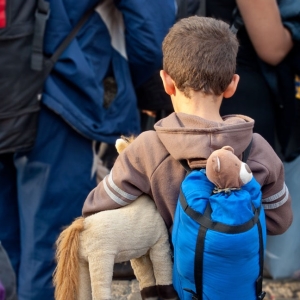Indikatoren in dieser Dimension analysieren, inwieweit Migrantinnen und Migranten hinsichtlich des Zugangs zu grundlegenden sozialen Diensten wie Gesundheit, Bildung und soziale Sicherheit den gleichen Status wie Bürgerinnen und Bürger haben. Es beschreibt die Rechte von Migrantinnen und Migranten auf Familienzusammenführung, Arbeit, Aufenthalt und Staatsbürgerschaft. Die Ratifizierung der wichtigsten internationalen Konventionen fällt ebenfalls in diesen Bereich.main.
Indikatoren in dieser Dimension bewerten die institutionellen, rechtlichen und regulatorischen Rahmenbedingungen der Länder im Zusammenhang mit Migrationspolitik. Dimension 2 beinhaltet auch das Vorhandensein von nationalen Migrationsstrategien, die mit Entwicklungspolitik und -ansätzen im Einklang stehen, sowie die institutionelle Transparenz und Kohärenz in Bezug auf Migrationsmanagement. In diesem Bereich wird auch untersucht, inwieweit Regierungen Migrationsdaten erheben und verwenden.
Diese Dimension konzentriert sich auf die Bemühungen von Ländern, in migrationsbezogenen Fragen mit anderen Staaten und einschlägigen nichstaatlichen Akteuren, einschließlich Organisationen der Zivilgesellschaft und des Privatsektors, zusammenzuarbeiten. Kooperation kann zu Verbesserungen der Regierungsführung führen, indem Standards angeglichen und angehoben, der Dialog intensiviert und Strukturen der Bewältigung von Herausforderungen geschaffen werden.
Diese Dimension umfasst Indikatoren für die Politik der Länder zur Steuerung des sozioökonomischen Wohlergehens von Migrantinnen und Migranten, z.B. die Anerkennung der Bildungs- und Berufsqualifikationen von Migrantinnen und Migranten, Bestimmungen zur Regelung der Studentenmigration und das Bestehen bilateraler Arbeitsabkommen zwischen Ländern. Die Indikatoren konzentrieren sich gleichermaßen auf Maßnahmen und Strategien im Zusammenhang mit dem Engagement der Diasporamitglieder und den grenzüberschreitenden Geldtransfers von Migrantinnen und Migranten
Diese Dimension befasst sich mit der Art und dem Grad der Bereitschaft von Ländern, wenn sie mit Mobilitätsdimensionen von Krisen konfrontiert sind, die entweder mit Katastrophen, der Umwelt und/oder Konflikten zusammenhängen. Die Fragen werden verwendet, um die Prozesse für Staatsangehörige und Ausländer sowohl während als auch Katastrophen zu ermitteln, einschließlich der Frage, ob humanitäre Hilfe für Migrantinnen und Migranten genauso verfügbar ist wir für Bürgerinnen und Bürger.
Diese Dimension analysiert den Ansatz der Länder zum Migrationsmanagement bezüglich Grenzkontroll- und Grenzschutzmaßnahmen, Zulassungsvoraussetzungen für Migranten, Vorbereitung und Flexibilität bei erheblichen und unerwarteten Wanderungsbewegungen sowie die Bekämpfung des Menschenhandels und des Menschenschmuggels von Migrantinnen und Migranten. Es werden auch die Bemühungen und Anreize zur Unterstützung der Integration der zurückkehrenden Staatsbürgerinnen und -burger bewertet.
This country Profile describes examples of well-developed areas of the Ukraine governance structures and areas with potential for further development, as evaluated through the six domains of the Migration Governance Indicators (MGI). These address migrants’ rights, a “whole-of-government” approach, partnerships, socioeconomic well-being of migrants, the mobility dimensions of crises, and safe and orderly migration.
Click the icons on the wheel to explore the key findings.
The Migration Governance Indicators (MGI) initiative is a policy-benchmarking programme led by the International Organization for Migration (IOM) and implemented with research and analysis from the Economist Impact. Funding is provided by IOM Member States.
Migration Governance: examples of well-developed areas
- Family reunification is possible for all foreigners legally residing in Ukraine that prove sufficient financial means to support the incoming family members.
- Non-nationals temporarily or permanently residing in Ukraine have equal access to self-employment as Ukrainian nationals
- In June 2020, the Ukrainian Parliament Commissioner for Human Rights established a Coordination Сouncil for Protection of Immigrants’ Rights.
Areas with potential for further development
- Access to health care depends on the resident status of the migrant.
- Ukrainian labour market regulations distinguish the employment processes for permanent and temporary residents, asylum seekers, and applicants for recognition as stateless persons
- Only persons residing in Ukraine on a permanent basis are entitled to pension and social protection benefits.
Migration Governance: examples of well-developed areas
- In December 2020, the Government signed a memorandum of understanding with the Ukrainian World Congress, an international coordination structure with Ukrainian diaspora civil society organizations.
- The National Human Rights Strategy approved in March 2021 is aligned with the State Migration Policy Strategy and aims to include migrants’ rights among Ukraine’s human rights priorities.
- The National Youth Strategy until 2030 (2021) accounts for migration issues by ensuring the involvement of young people (including young migrants) in the social, economic and cultural life of Ukraine.
- The Integrated Border Management Strategy for 2020–2025 (2019) takes into consideration the challenges posed by irregular migration and aims to ensure regular crossings over the State border.
Areas with potential for further development
- Not all the key national policy strategies comprehensively address migration issues.
- Key national migration strategies lack specific measures to combat gender discrimination in migration.
Migration Governance: examples of well-developed areas
- The country participates in several regional consultative forums on migration, including the Budapest and Prague Processes and the Eastern Partnership Panel on Migration, Mobility and Integrated Border Management.
- In 2020, Ukraine signed a memorandum of understanding with Finland to promote cooperation on migration questions, improve communication, and deepen ties between the migration agencies of both countries.
- The Government engages in both national and regional consultations with civil society on citizenship acquisition, legalization of migrants in an irregular situation, and access to civil documentation for internally displaced persons, among others.
Areas with potential for further development:
- Ukraine is not a party to any regional agreement promoting labour mobility.
- The country has no designated forum for private sector engagement on migration issues on a permanent basis.
Migration Governance: examples of well-developed areas
- The Government of Ukraine is pursuing immigration quotas for different migrant categories to satisfy the needs of the labour market through immigration.
- Labour Force of Ukraine 2020 (2021) includes data on the composition of the foreign-born labour force by place of birth and length of residence in Ukraine
- Migrants and their families have access to a wide range of financial services in Ukraine, including opening bank accounts remotely from abroad.
Areas with potential for further development
- Foreign students do not have the right to work during or after their studies in Ukraine.
- Ukraine has no measures aimed specifically at the ethical recruitment of migrants.
Migration Governance: examples of well-developed areas
- Migrants have the same rights as citizens in crisis situations; though they are not specifically addressed in national legislation regulating emergency response.
- The State Strategy for Regional Development for 2021–2027 (2020) addresses the integration of internally displaced persons (IDPs) into communities
- The National Human Rights Strategy (2021) aims to protect the rights of IDPs by creating conditions for their integration.
Areas with potential for further development
- The Government has not developed legislation or a strategy on emergency management that accounts for migration issues or large-scale displacement.
- Vulnerabilities of migrants are not explicitly accounted for by the legislation or by-laws regulating communication in times of crisis.
- The reintegration of returning migrants who fled the country during a crisis is not a part of the key migration policy strategies.
Migration Governance: examples of well-developed areas
- The State Migration Policy Strategy (2017) aims to establish alternative measures to the detention of migrants. The Integrated Border Management Strategy for 2020–2025 (2019) cites the promotion of alternative methods of detention as one of its tasks.
- The Constitution and the Labour Code of Ukraine prohibit forced labour but do not specifically address migrant labour exploitation.
- Employees of the State Employment Service and consular staff of diplomatic missions undergo training on the identification and prevention of trafficking and labour exploitation.
- The Commission on the Issues of Persons Gone Missing under Special Circumstances (2019) acts as a coordinator of the activities of State bodies authorized to register and search for persons gone missing in special circumstances, including migrants.
Areas with potential for further development
- The State Migration Policy Strategy outlines conditions for the voluntary return of Ukrainian emigrants and its Action Plan for implementation (2018–2021) focuses mainly on the reintegration of working emigrants.
2021 November




